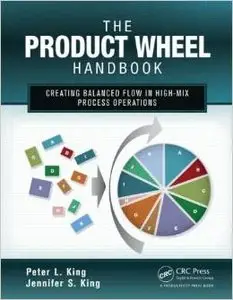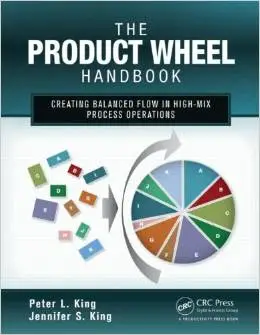The Product Wheel Handbook: Creating Balanced Flow in High-Mix Process Operations by Peter L. King and Jennifer S. King
English | 2013 | ISBN: 1466554185 | 219 pages | PDF | 2,7 MB
English | 2013 | ISBN: 1466554185 | 219 pages | PDF | 2,7 MB
The Product Wheel (PW) design process has practical methods for finding the optimum sequence, minimizing changeover costs, and freeing up useful capacity. So much so, that the DuPont™ Company and Exxon Mobil are just a few companies that have used the product wheel concept to achieve and sustain a competitive advantage.
Breaking down a fairly complex design process into manageable steps, The Product Wheel Handbook: Creating Balanced Flow in High-Mix Process Operations walks readers through the process for designing and implementing the PW technique. It includes a case study taken from actual practice that illustrates the design process and its benefits. Describing how to apply the product wheel technique to any manufacturing operation, the book:
• Details the steps required to implement product wheels
• Explains why certain traditional manufacturing metrics should be reevaluated so they don’t inhibit product wheel performance
• Defines the cultural foundation necessary for smooth product wheel design and implementation
• Includes a real-world case study and several examples of product wheels being used by successful manufacturing companies—including BG Products, Inc., the DuPont™ Company, the Dow Chemical Company, and Appleton
Many of the steps in wheel design described in this book are not new. What’s new is their application to production planning and scheduling problems, and more importantly, a clear roadmap explaining how and when they should be used in product wheel design.
Supplying you with the tools to reduce the chaos often found in production scheduling, the book outlines a disciplined structure that will allow you to spend less of your time resolving schedule problems. Most importantly, it provides your organization with a stable platform to deal with abnormal events in a less stressful and more logical manner.



